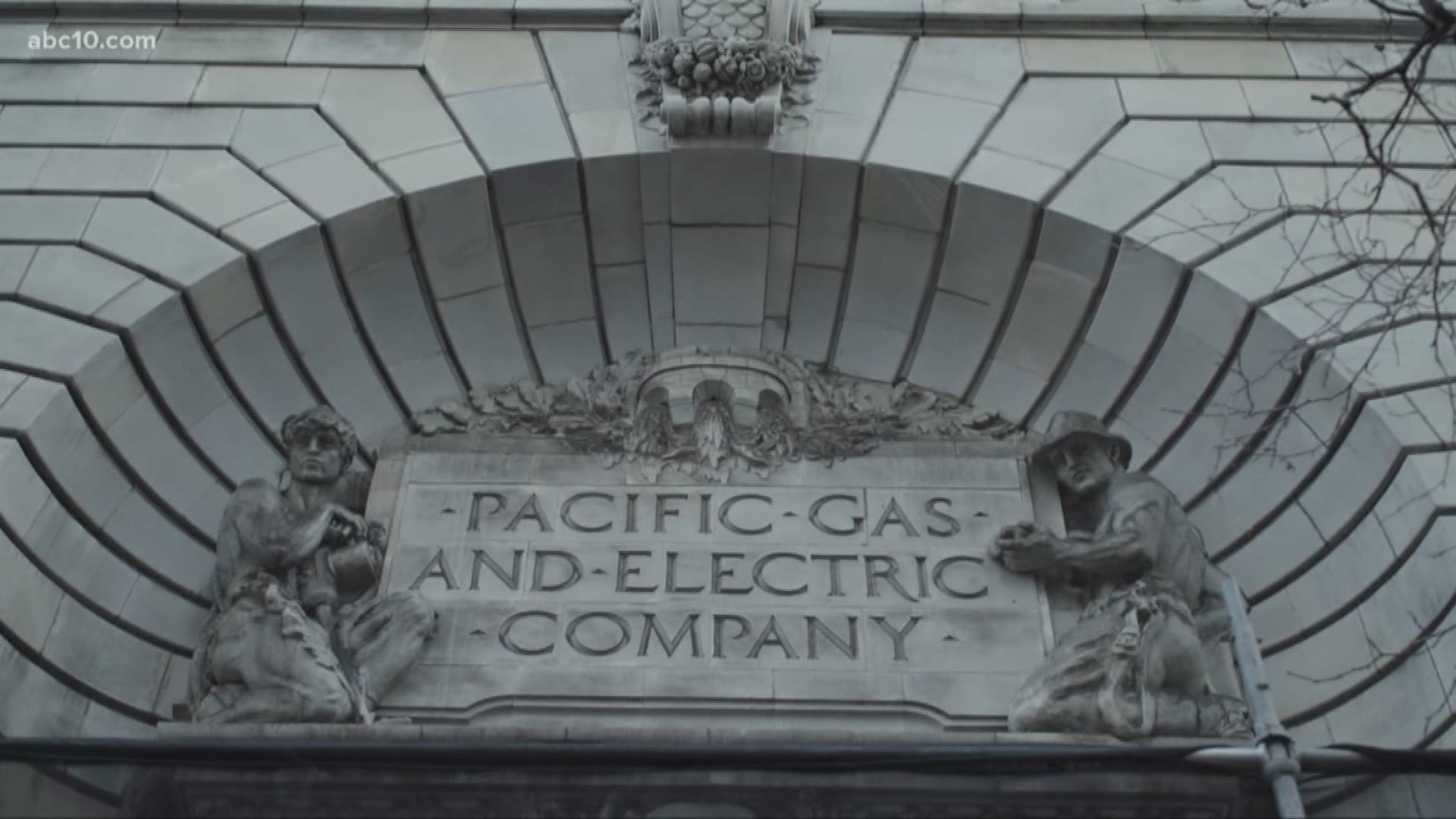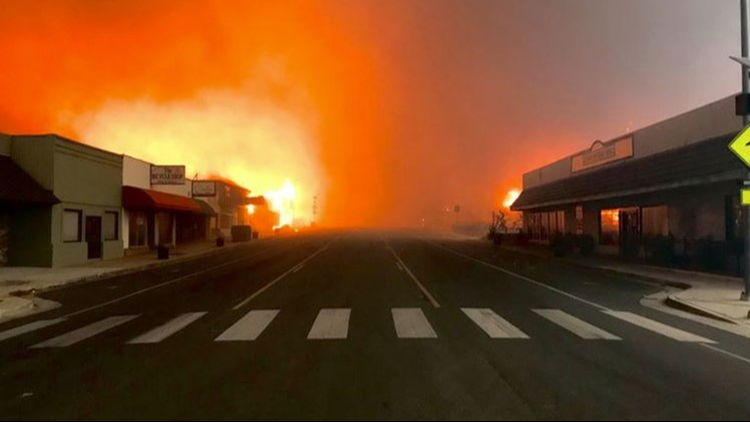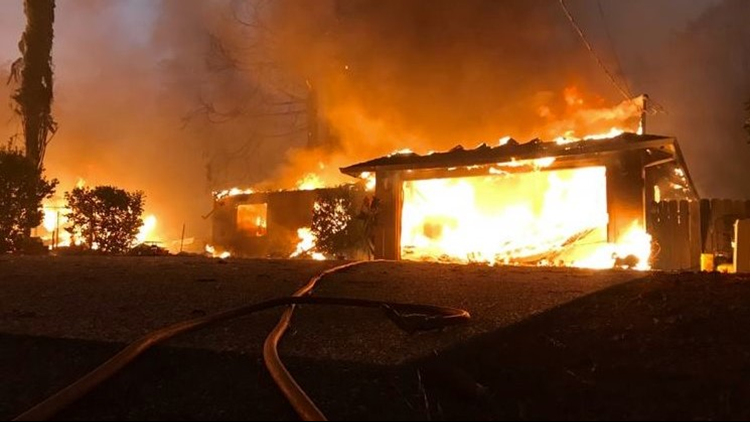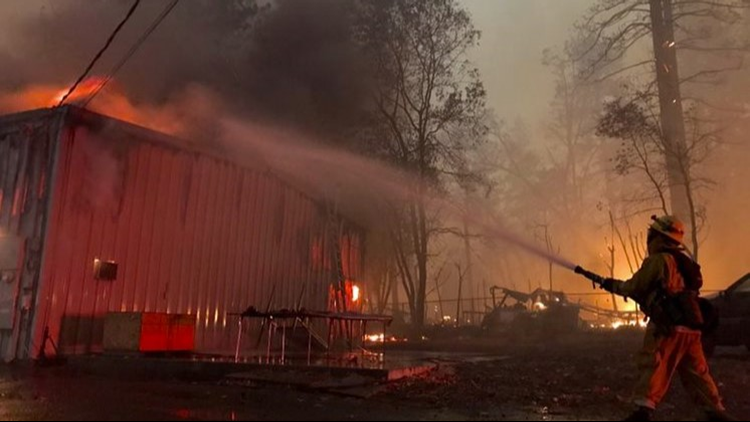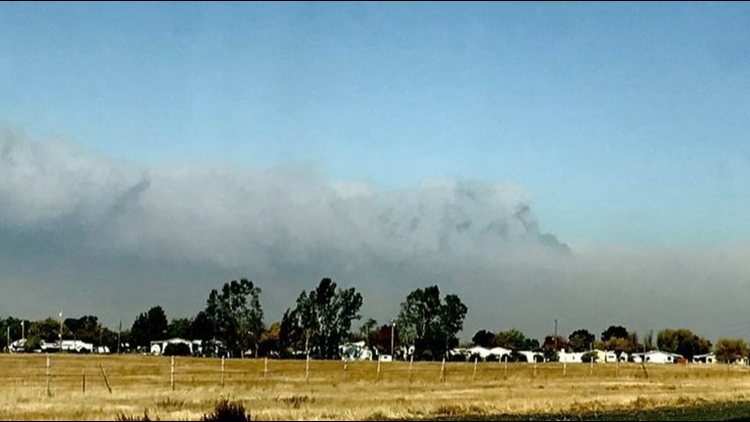SACRAMENTO, Calif. — In order for wildfire victims to get anything like the $13.5 billion that PG&E is currently offering to pay them, a lot of things will have to go right.
For starters, half of the deal -- $6.75 billion -- would be paid to fire victims in the form of PG&E stock to be sold at a later time.
But the value of all shares of PG&E stock don't even add up to that amount today.
Under the terms, California Gov. Gavin Newsom has until the end of Friday to decide to void the deal if he wants to. If approved by the governor and the bankruptcy judge, fire victims will have an opportunity to vote on whether to accept the proposed settlement.
RELATED:
HOW IS PG&E GOING TO BE WORTH THIS MUCH MONEY?
The plan calls for at least one-fifth (20.9%) of PG&E's stock shares to be given to a trust fund for fire victims.
In the years ahead, the trust fund would sell those shares to provide more cash to pay damages for things like the wrongful death of loved ones, pain and suffering, and other losses not covered by insurance.
But in order for one-fifth of PG&E's stock to be worth the $6.75 billion, PG&E's market cap (the entire value of all shares of stock) would have to be nearly $34 billion.
PG&E hasn't been worth that much money since before the wildfires caused by its equipment back in October 2017.
As of Friday, the entire company's stock is only worth $5.8 billion.
We've asked PG&E to explain how it plans for its stock value to reach the necessary amount. The company pointed us to the deal's methodology: the parties agreed to plug in an amount of about 15 times what the company is estimated to earn in revenue.
In other words: no one is promising that the shares of stock in PG&E's reorganized holding company will actually be worth the $6.75 billion, but they've agreed to value the stock at this amount for the purposes of reaching a deal.
Exiting bankruptcy should be positive news for PG&E's stock value. A return to profitability and paying dividends to shareholders would go a long way to raising the stock price as well.
Bottom line: the deal would give PG&E and the victims of wildfires caused by its equipment a shared interest in seeing the company do well financially.
WHAT IF PG&E CAUSES MORE WILDFIRES?
This is a real risk to the future value of PG&E's stock. Part of the proposed solution to it is AB 1054, the state law signed by Gov. Newsom earlier this year.
The law envisions a $21 billion fund that utilities can use to pay for the damage caused by future wildfires, but a bad fire season could run through all that money and leave utilities more vulnerable to having to pay for wildfire damage.
If that happens to PG&E, the company's stock may also be bolstered because AB 1054 also made it easier to pass along the cost of wildfire damage to customers on power bills.
Camp Fire devastation in Butte County
Still, if PG&E goes on to cause very bad fires and customers are able to prove that the company acted unreasonably, PG&E could end up back in financial trouble again.
The bankruptcy deal does not include payments for the 2019 Kincade Fire that began near a PG&E transmission line. CAL FIRE is still investigating whether PG&E's equipment caused this fire, which burned nearly 300 homes in Sonoma County during the October power blackouts.
RELATED
WHAT IF PG&E LOSES ITS MONOPOLY?
State regulators at the California Public Utilities Commission (CPUC) have the power to revoke PG&E's monopoly, which currently covers territory the size of the state of Oklahoma and is home to 16 million people.
The CPUC has an open investigation into the question of PG&E's future structure, which would seem to be undercut by the proposed bankruptcy deal. Ending the monopoly would not be good news for PG&E's stock value.


However, it is worth pointing out that the state can't simply take all of PG&E's power lines away from it without compensation. The price that would be paid to buy out PG&E is negotiable and would likely become the subject of court battles.
As a practical matter, if Gov. Newsom gives his approval to the bankruptcy deal it would seem unlikely that the CPUC would want to undercut it by ending the monopoly and decreasing the value of the settlement PG&E reached with fire victims.
THE CAMP FIRE CRIMINAL INVESTIGATION
This is another big question mark in PG&E's future.
Prosecutors are exploring charges as serious as 85 counts of manslaughter and thousands of counts of reckless arson for PG&E's role in starting the Camp Fire.
The case was not helped by a recent report from the CPUC, which blamed PG&E for 12 violations of state laws and regulations for causing the Camp Fire and found that PG&E could have and should have been able to prevent it.
A badly worn hook failed in high wind on a PG&E transmission line tower and the CPUC blamed the company for failing to find the damaged part before it broke.

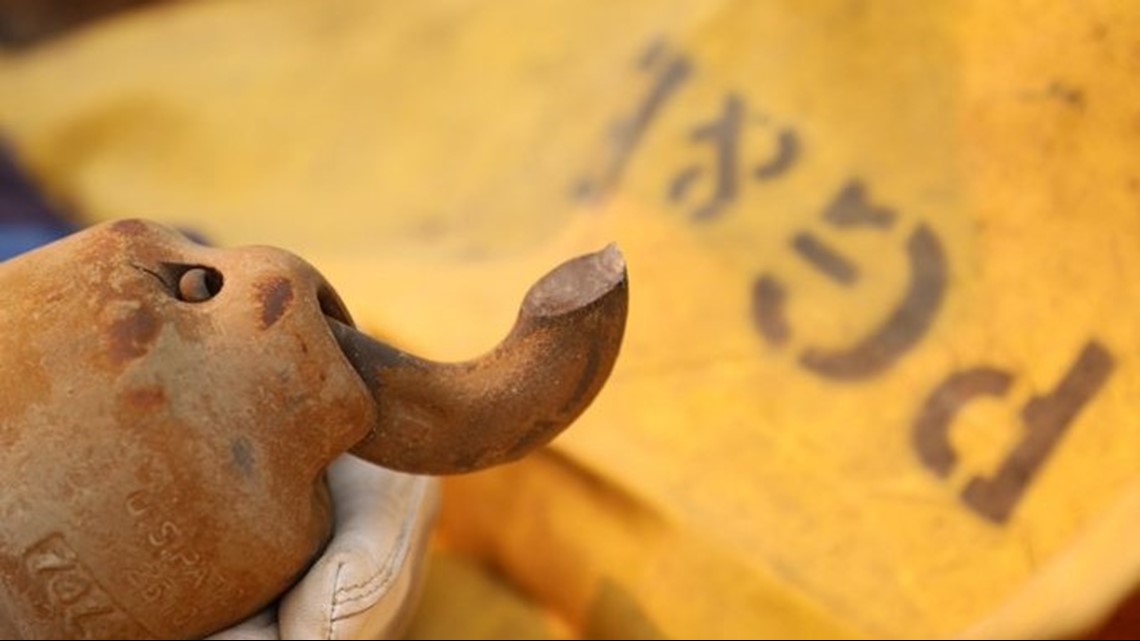
Moreover, the company found more than 500 other safety problems on the same line and decided to shut it down permanently.
“PG&E’s inspection and maintenance of the incident tower were not isolated, but rather indicative of an overall pattern of inadequate inspection and maintenance," the CPUC report found.
None of this helps PG&E's case if it needs to defend itself from criminal charges, which could also hit PG&E's bottom line.
"We're not talking also or just about the fines and the fees," Butte County District Attorney Mike Ramsey told ABC10 earlier this year. "We're also talking about restitution."
PG&E ISN'T DONE SERVING TIME FOR ITS PAST CRIMES
PG&E has served nearly three years of its five-year probation sentence for crimes it committed in connection with the 2010 San Bruno gas explosion, which killed 8 people.
Federal Judge William Alsup has been asking a lot of questions since the CPUC report on the Camp Fire came out this month.
That's significant because he previously considered ordering PG&E to do a massive amount of safety improvement work that PG&E estimated it would cost between $75 - 150 billion to complete.
"PG&E does not have the ability to raise those funds," the company said at the time.
Alsup modified his plan to allow PG&E to do a more narrowly tailored set of safety improvements, but there's nothing stopping him from doling out more trouble to PG&E.
Under the terms of its probation, PG&E isn't allowed to commit any more legal violations.
The CPUC's report claims that's what happened in the Camp Fire.
TRUST FUND FOR VICTIMS HAS DECISIONS TO MAKE
If PG&E's deal with victims does move forward, the cash and stock in the settlement would go into a trust fund for victims.
The fund would have to decide how and how much to pay people who suffered losses in the fire.
As of yet, it's unclear how much each individual would be able to receive for different losses like wrongful death of loved ones, injury in fires, and the pain and suffering of losing their homes and communities.
Join the conversation with ABC10 reporter Brandon Rittiman at https://www.facebook.com/brandonrittiman/

